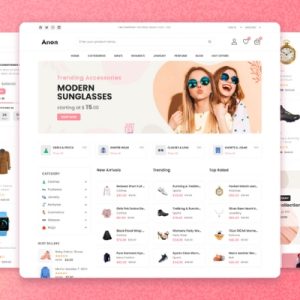Why Landing Pages Are Indispensable for Digital Marketing
Landing pages are not merely an additional page on your website; they are critical components of any effective digital marketing strategy for several key reasons:
- Hyper-Focused Messaging: They allow for highly targeted messaging that directly aligns with the advertisement or link the visitor clicked. This consistency reassures the visitor they’ve come to the right place and increases the likelihood of conversion.
- Reduced Distractions: By intentionally removing site navigation, sidebars, and other extraneous links often found on a typical website, landing pages minimize options that could divert a visitor’s attention from the primary call to action (CTA).
- Measurable Results: Landing pages are built for tracking. Marketers can precisely measure conversion rates, A/B test different elements, and gain valuable insights into what resonates with their audience, leading to continuous optimization.
- Lead Generation Powerhouse: For businesses focused on lead generation, landing pages are invaluable. They typically include forms that collect vital contact information in exchange for something of value, like an ebook, a free trial, a webinar registration, or a consultation.
- Enhanced ROI for Campaigns: By optimizing for a specific conversion goal, landing pages significantly improve the return on investment (ROI) for paid advertising campaigns and other marketing efforts.
Essential Elements of a High-Converting Landing Page
While the specific design and content will vary based on the goal, several fundamental elements contribute to a landing page’s effectiveness:
- Clear and Compelling Headline: This is the first thing a visitor sees and should immediately grab attention, articulate the page’s purpose, and align with the ad or link that brought them there. It should focus on the benefit to the user.
- Persuasive Copy: Concise, benefit-oriented text that addresses the visitor’s pain points and clearly explains the value of the offer. Use bullet points and subheadings to make it easily scannable.
- Strong Call to Action (CTA): This is the single, most important element. The CTA button should be visually prominent, use action-oriented language (e.g., “Download Now,” “Get Your Free Trial,” “Sign Up”), and clearly indicate what will happen next.
- High-Quality Visuals: Images or videos that are relevant, professional, and enhance the message. Visuals can quickly convey information and evoke emotion, helping to reinforce the offer.
- Social Proof and Trust Signals: Testimonials, customer logos, industry awards, and security badges help build trust and credibility, showing potential customers that others have benefited from the offer.
- Optimized Form (for Lead Gen): If the goal is lead generation, the form should be as short as possible, only asking for essential information. Longer forms can be broken into multiple steps to reduce friction.
- Mobile Responsiveness: A significant portion of internet traffic comes from mobile devices, so the landing page must display and function flawlessly across all screen sizes.
- Fast Load Speed: Visitors are impatient. A slow-loading landing page can lead to high bounce rates, negating all other optimization efforts.
Best Practices for Landing Page Success
To maximize your landing page’s conversion potential, consider these best practices:
- Match Ad to Page: Ensure a strong message match between your ad creative/link and the landing page content.
- Keep it Above the Fold: Place the most critical information, including the headline, unique value proposition, and primary CTA, where it’s visible without scrolling.
- Eliminate Navigation: Remove all navigation menus and links that lead visitors away from the primary conversion goal.
- A/B Test Everything: Continuously test different headlines, CTAs, visuals, copy, and layouts to identify what resonates best with your audience and drives the highest conversion rates.
- Provide a Thank You Page: After conversion, redirect visitors to a “thank you” page to confirm their action and provide next steps.
- Optimize for SEO (where relevant): While primarily for direct traffic, basic SEO principles like relevant keywords can help improve organic visibility for certain landing pages.
In conclusion, a landing page is more than just a simple web page; it’s a precisely engineered tool in the digital marketer’s arsenal. By understanding its purpose and diligently applying best practices, businesses can transform fleeting interest into tangible conversions, driving growth and achieving their marketing objectives.






There are no reviews yet.